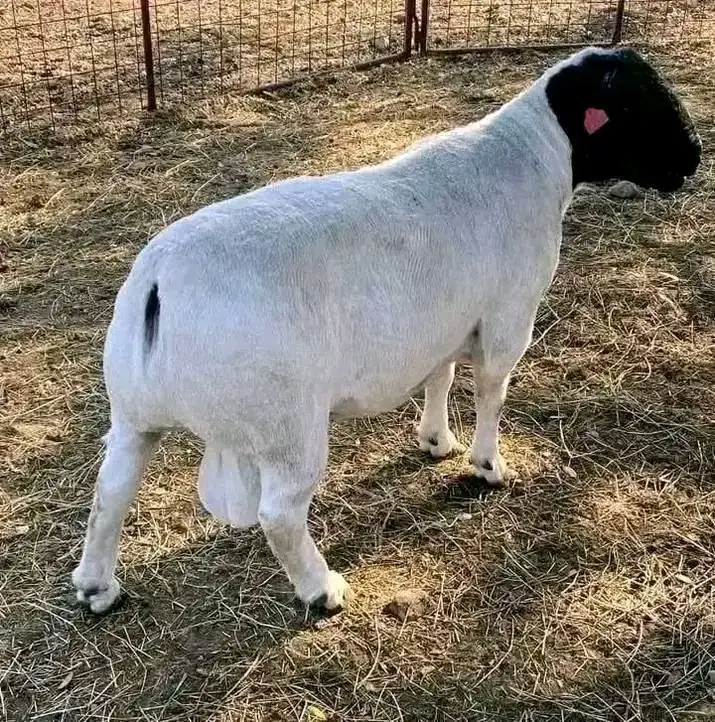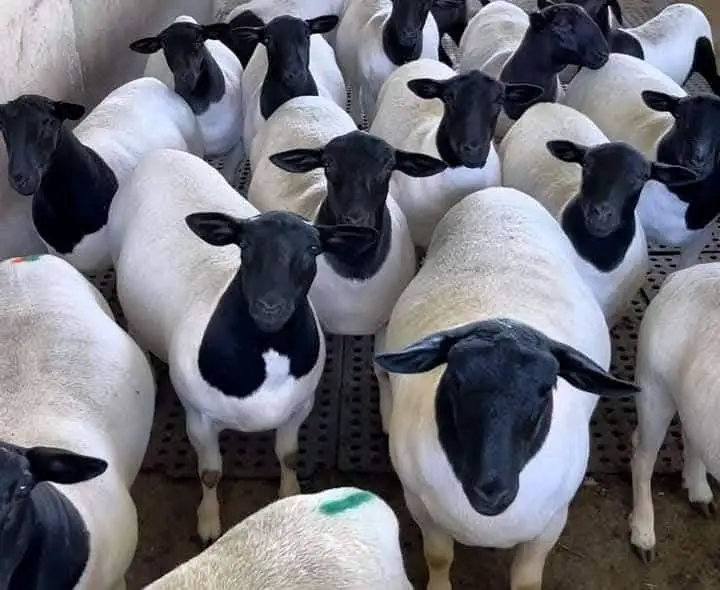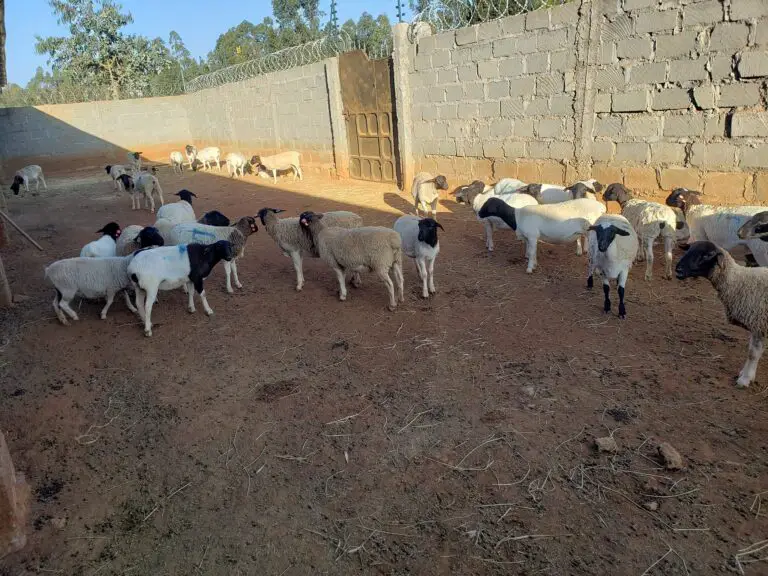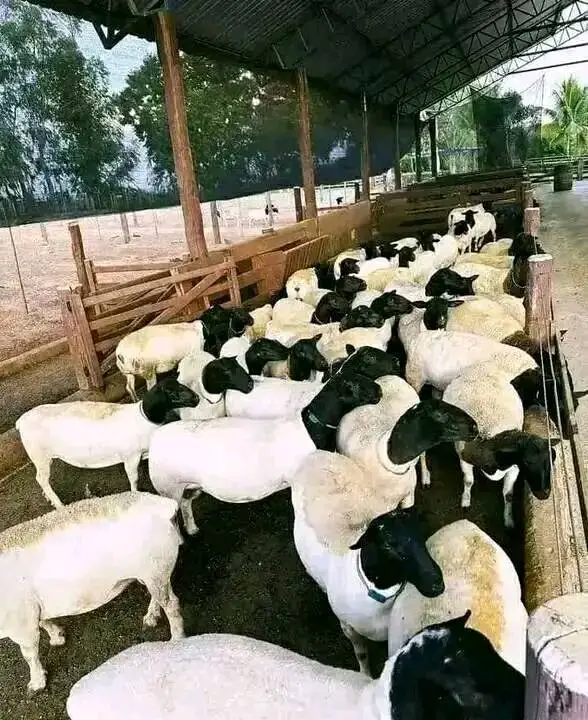Dorper Farming for Beginners
Dorper sheep, originally bred in South Africa, have become a top choice for farmers in Kenya and beyond due to their hardiness, adaptability, and high-quality meat production.
If you’re new to livestock farming, Dorpers offer a low-maintenance entry point with strong profit potential.
This guide walks you through every step of starting and managing a successful Dorper farm.
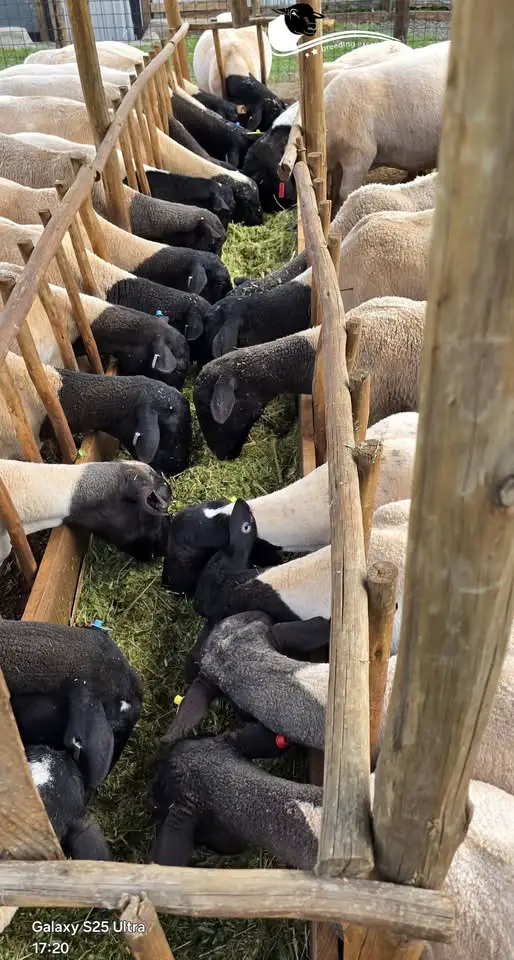
1. Why Choose Dorper Sheep?
- Adaptability: Thrive in arid/semi-arid climates (ideal for Kenya’s dry regions).
- Low Maintenance: Graze efficiently on sparse vegetation, reducing feed costs.
- High Fertility: Ewes lamb twice every three years, with 1–2 lambs per birth.
- Fast Growth: Lambs reach slaughter weight (35–40 kg) in 6–8 months.
- Disease Resistance: Less prone to parasites compared to wool breeds.
2. Getting Started
A. Initial Investment & Budgeting
Starting a small-scale Dorper farm (10–20 sheep) requires careful planning:
| Expense | Cost Range (KES) |
| Breeding Stock (10 ewes + 1 ram) | 200,000–500,000 |
| Basic Shelter | 50,000–100,000 |
| Fencing (1–2 acres) | 30,000–80,000 |
| Feed & Supplements (1 yr) | 100,000–200,000 |
| Total | 380,000–880,000 |
Tip: Start small and scale up as you gain experience.
B. Sourcing Quality Breeding Stock
- Buy from certified breeders (e.g., Kenya Agricultural and Livestock Research Organization).
- Look for traits: muscular build, clear eyes, strong legs, and documented health records.
- Average price: KES 15,000–30,000 per ewe; KES 50,000–150,000 for a purebred ram.
C. Land Requirements
- Space: 1 acre sustains 5–10 sheep (rotational grazing recommended).
- Shelter: Simple structures with shade and ventilation (e.g., raised wooden sheds).
- Water Access: Ensure clean water supply (5–8 liters/sheep daily).
3. Housing & Fencing
- Shelter Design: Use locally available materials (wood, iron sheets). Elevate floors to prevent dampness.
- Fencing: Barbed wire or electric fencing to deter predators (hyenas, jackals).
- Rotational Grazing: Divide land into paddocks to prevent overgrazing.
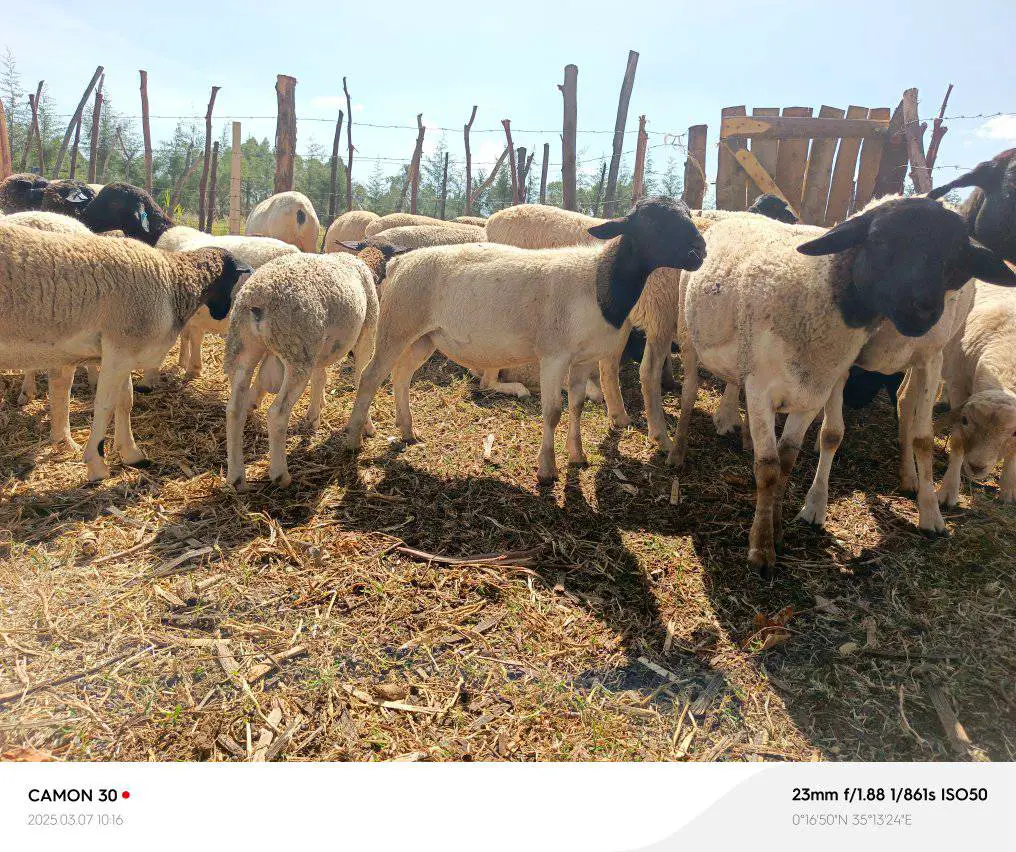
4. Feeding & Nutrition
Dorpers thrive on pasture but need supplements during droughts:
| Feed Type | Quantity (Per Sheep Daily) | Purpose |
| Fresh Pasture | Ad libitum | Primary energy source |
| Hay (Dry Season) | 2–3 kg | Fiber replacement |
| Concentrates (e.g., maize bran) | 0.2–0.5 kg | Growth/breeding support |
| Mineral Licks | Free access | Prevent deficiencies |
Sample Diet for Lactating Ewes:
3 kg Rhodes grass hay + 1 kg lucerne + 0.5 kg sunflower cake + mineral lick.
5. Health Care & Disease Management
- Vaccinations:
- Annual vaccines for anthrax, sheep pox (KES 200–300/sheep).
- Deworming:
- Every 3–4 months (e.g., Albendazole, KES 50–100/dose).
- Common Issues:
- Parasites: Regular dung checks.
- Foot Rot: Trim hooves and use copper sulfate foot baths.
6. Breeding & Lambing
- Breeding Cycle: Ewes reach puberty at 6–8 months; breed at 12–18 months.
- Gestation: 150 days. Provide extra feed in the last 6 weeks.
- Lambing Tips:
- Isolate pregnant ewes in clean pens.
- Ensure lambs suckle colostrum within 2 hours of birth.
7. Daily Management Practices
- Morning: Check water, feed supplements, inspect for illness.
- Afternoon: Rotate grazing paddocks.
- Evening: Secure sheep in predator-proof shelter.
- Weekly: Clean pens, refill mineral licks.
8. Marketing & Profitability
- Target Markets:
- Local butcheries, hotels, and festivals (e.g., Eid).
- Breeding stock sales to other farmers.
- Pricing:
- Slaughter lambs: KES 8,000–12,000 each.
- Breeding rams: KES 50,000–150,000.
- Revenue Example: 10 ewes produce 15 lambs/year = KES 120,000–180,000 annually.
9. Common Challenges & Solutions
| Challenge | Solution |
| Droughts | Stockpile hay; plant drought-resistant fodder. |
| Predators | Use guard dogs or solar-powered lights. |
| Disease Outbreaks | Quarantine new stock; maintain vaccination schedules. |
10. Tips for Success
- Keep Records: Track expenses, breeding dates, and health treatments.
- Join Cooperatives: Bulk-buy feed and access training (e.g., Kenya Livestock Producers Association).
- Visit Successful Farms: Learn best practices from experienced Dorper farmers.
Final Word: Dorper farming is a rewarding venture for beginners, blending resilience with profitability. Start with a clear plan, prioritize animal health, and leverage Kenya’s growing demand for quality mutton.
With dedication, your flock can become a cornerstone of your agricultural livelihood.
Data sources: Kenya Agricultural and Livestock Research Organization (KALRO), Farmer interviews (2023).
